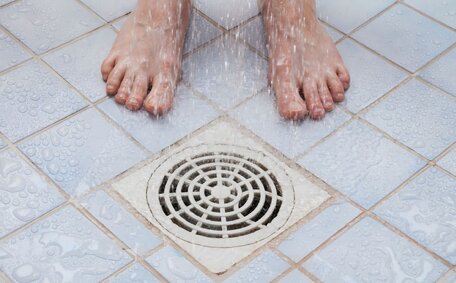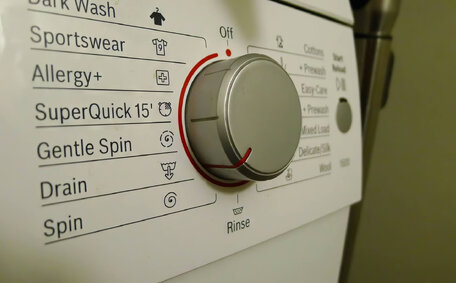
Baking Soda & Vinegar for Cleaning
Using baking soda & vinegar separately for cleaning is very effective; but mixing them dilutes their cleaning power. Learn how to use them properly.
Read MoreYour natural gas meter for a residential property is typically located on the exterior of the home, often on the side or back of the building. Finding and being familiar with the location of your gas meter is important when you need to manage your gas supply.
Check the side or rear walls of your residence to locate the external gas meter, ensuring you’re prepared to turn off the gas supply if necessary. It can be housed in a wall-mounted meter box or cabinet, or stand as a freestanding unit on a pole or pipe close to your home. The gas meter will be connected to the gas pipe that runs underground into your property.
To turn off the gas, use the information on the gas meter, which includes the meter identification number, provider’s name, and an emergency contact number. Make sure this information is visible and legible in case the gas needs to be turned off.
Understanding how to find your shutoff gas at the external meter is crucial in an emergency. Make sure you can access it and are familiar with how the gas meter off position works before an emergency arises. After shutting off the main gas valve, it’s critical to contact your gas provider to ensure safety in your residence.
To turn off your gas supply at the meter, you need to locate and operate the gas shut off valve. This valve is usually attached directly to the gas meter.
The off valve will operate like a valve tap or handle on the pipe leading into the meter. It may be a round, turning wheel or a valve handle that rotates 90 degrees. The shutoff valve will be labelled with words like "Gas Valve" or "Shutoff".
Confirm that your gas supply valves are easily visible, accessible, and operable, located right next to the gas meter. Never block, cover or obstruct the shutoff valve. It needs to be easy to access in an emergency.
Knowing how to properly operate this shutoff valve is crucial for the safety of your gas appliances. Rotating it 90 degrees or a quarter turn until the lever crosses the gas pipe will shut off the gas supply. Turning the level so it is parallel with the pipe indicates the gas is on.
When placed in the off position, ensure the shutoff valve lever stands at right angles to the pipe in your house. Confirm it is tightly closed by attempting to turn on a gas appliance inside. If it’s fully shut, your supply to the hot appliances won’t turn on.
Never attempt to restore the gas supply after it has been shut off without professional assistance; contact a licensed gas fitter instead. Call a professional gas technician to inspect your system and restore your gas supply.
There are a few important scenarios when you need to turn off your gas supply quickly and safely:
In gas emergencies, acting swiftly and decisively is critical. Know where your gas metre and gas shutoff valves are located so you can turn off the gas supply right away if needed. Taking action to cut off water and gas supplies could prevent disasters such as fires, explosions, or carbon monoxide poisoning.
Should there be no doubt about leaking, malfunctioning, or damaged gas appliances in your residence, never hesitate to turn off gas supply immediately. Safety should always come first with gas supplies. Contact a licenced professional immediately for assistance if you have to shut off your gas in an emergency.
Turning off your main gas supply should only be done in emergencies if you suspect a leak or need to do maintenance. Exercise caution, avoid forcing the valve, and ensure it is fully rotated to the off position. Do not turn your gas back on after shutting off the main valve; wait for professional help.
Before shutting off the main gas valve outside, it’s recommended to turn off the individual shutoff valves for any gas appliances inside your home as an added precaution.
Firstly, find the valve typically located behind the stove, which serves devices like your hot water heater and gas stove. These are typically found behind stove or inside a cupboard nearby.
Use a wrench to turn the appliance’s supply valve clockwise a quarter turn until it’s perpendicular to the pipe. Make sure the valve is fully closed to stop the flow gas.
To minimise the risk of leaks in the supply pipe when shutting off the main line, turn off all your gas appliance valves. It also lets you safely maintain and service appliances without having to shut off the entire gas supply.
Ensure you turn off appliance valves prior to disconnecting or relocating any appliance. Turn the appliance valves back on slowly after restoring the main supply to expel trapped air before relighting.
Being familiar with your appliance shutoffs allows you to isolate issues and work on specific gas appliances safely. But make sure to call a professional when working gas systems requiring major works.
The street-side gas shutoff valve is usually situated near the property boundary, connected to the main gas line beneath the street. This valve controls gas flow into the entire premises.
The street-side valve may be recessed in a locked metal box at ground level, connecting to gas lines, requiring a special wrench to access and turn off. It’s usually a T-handle or wheel valve that turns 90 degrees.
In emergencies, the fire department or gas network specialists are qualified to shut off the street valve. However, understanding how to use the proper wrench to shut it off can be critical in an emergency.
Use a gas shutoff wrench or valve key to turn the street valve clockwise a quarter turn until it’s perpendicular to the pipe to shut off gas flow into the property. Do not use excessive force or over tighten.
The street-side valve should only be accessed in dire emergencies with major leaks. Never attempt to turn the street valve back on after shutting it off. Only a licenced professional can safely restore street gas supply.
But knowing how to do it yourself with the proper wrench can be criticaessive force or over tighten.
After shutting off the gas line in an emergency, it’s imperative not to attempt restoring the gas supply on your own. The gas company will need to assess the situation, check for leaks, and safely restore your gas service. They have specialised equipment to thoroughly irlying issue. Never relight pilot lights or operate appliances until a technician has given the all clear.
If you’ve had work done on old gas appliances or lines, or are unsure about the safety of your gas system for any reason, call a licenced gas fitter for inspection before resuming use. They can confirm everything is intact and working properly after gas supply disruptions.
It’s important to prioritise safety and exercise patience when addressing gas emergencies.
Wait for qualified technicians to evaluate your system and restore gas flow once it’s been shut off. Ensuring the integrity of your gas system is crucial for safety.
To learn more about professional support with gas appliance taps or restoring your gas after a shutoff, contact our business at 1300 349 338 or [email protected]. We’re available 24/7 to respond to gas supply issues quickly and safely.
Before restoring your gas supply and reigniting any appliances post-outage, make sure the pilot lights are extinguished. Allowing gas to accumulate with the pilot light lit can be extremely hazardous.
Start by locating the pilot light assembly on each appliance, including your hot water system. Common gas appliances like hot water heaters, stoves and ovens, and furnaces have exposed pilot lights. The pilot light, which is a small flame, could be situated at the back, bottom, or sides of the appliance.
Inspect closely to confirm the pilot light is completely off and no gas odour is present. If you see any sign of a flame or smell gas, do not relight it. Call a professional immediately.
If the pilot lights are out and you detect a gas odour, do not turn the supply on. Ventilate the area and call your gas company to inspect for leaks. They can relight your pilots safely once any issues are resolved.
When professional technicians give the all-clear, you can slowly turn your gas supply back on. Carefully relight each appliance pilot following the manufacturer’s instructions. If you have any doubts about the pilot lights, do not attempt to relight them; instead, call a licensed gas fitter.
Using baking soda & vinegar separately for cleaning is very effective; but mixing them dilutes their cleaning power. Learn how to use them properly.
Read MoreBlocked drains are usually caused by buildup of hair, grease, debris and more in your pipes. Fix the problem with professional drain unblocking services to get your drains flowing freely again. Contact us for affordable drain unblocking.
Read MoreWhen you suspect a gas leak or damaged gas line, contact a licensed gas fitter immediately to locate and repair it. A gas line repair involves sealing leaks, replacing corroded or damaged pipes and testing all connections for safety before restoring gas supply.
Read MoreLilyfield, 2040 NSW
We will call back as soon as possible.




